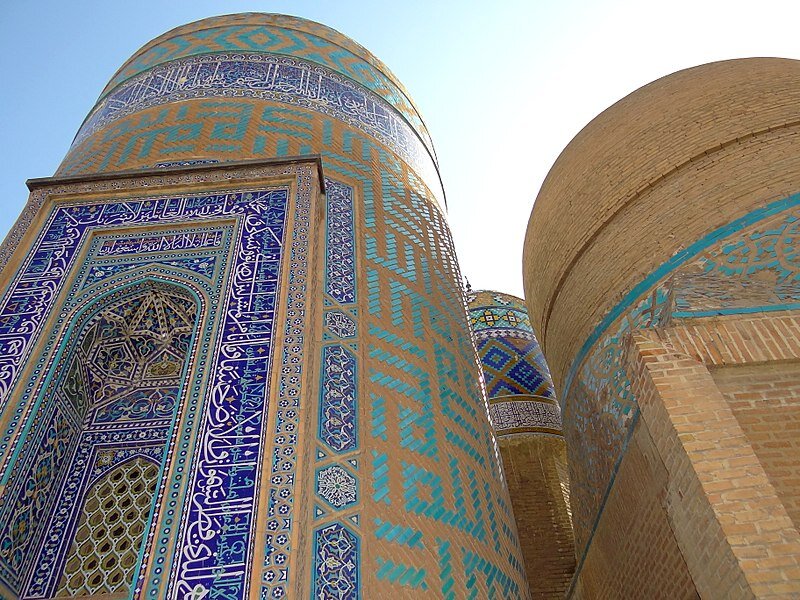Mahin Ahdieh, a Baha’i from Nayriz, took her young nephew for a trip cross Iran in 1956.Their second stop was Urmia, (‘Urumiyih’ in Baha’i histories). The Bab stopped in Urmia on his way to his trial in Tabriz. The only portrait of the Bab was painted during his stay there. The population greeted him as a holy man, and after he had used to the public bath, the water he had used was taken by local people who hoped to receive blessings from it.
Urumiyyih in 1911, people waiting for the Shah’s visit
One of the miracle stories associated with the Bab unfolded there when the local ruler decided to put the Bab to the test by bringing out his wildest horse for him to ride. The townspeople gathered around to see how this horse would react to the holy man and if he really had spiritual power. The Bab approached the animal, calmly took the bridle up in his hand, stroked the horse, put his foot in the stirrup, and hoisted himself up onto his mount. All the while the wild horse stood still.
Luke Slott tells the story of the wild horse at Urumiyyih
This story was known from The Dawn-Breakers, a chronicle written by Nabil-i-Zarandi.
Nabil was in the Presence of Baha’u’llah in 1851 after which he travelled throughout Iran collecting stories of important events related to the Faith. Baha’u’llah instructed him to record the events objectively. Nabil began to put his notes together into a chronicle in 1887 with the help of Baha’u’llah’s brother, Mirza Musa. The manuscript was reviewed by Baha’u’llah and ‘Abdu’l-Baha and corrected, but the corrected version was taken by Mirza Muhammad Ali, the Covenant-Breaker, after the Ascension of Baha’u’llah.
Shoghi Effendi wanted believers in the West to know about the history of the Faith. Over the course of eight months in 1930, Shoghi Effendi worked on an English translation of Nabil’s narrative, though he had to use the original manuscript and make his own corrections.
Dr. Moojan Momen on Shoghi Effendi’s historical work
Aunt Mahin and her nephew next drove through the mountains of Eastern Azerbaijan to Ardabil. This ancient city is mentioned in the Zoroastrian scripture. The gifted founder of the Safavid dynasty, one of the most extensive and well-administered empires of its time, was born there.
Safavid Tomb
The Safavid Dynasty made ‘Twelver Shi’ism’ which the early Babis followed.
Shi’ism is the“… branch of Islam that accepted `Ali ibn Abi-Talib, Muhammad's son-in-law, as the Prophet's legitimate successor. The Twelver Shi`is, the branch of Shi`ism that accepted a line of twelve hereditary successors called Imams, are the majority of modern Shi`is. The Babi and Bahá'í Faiths arose in the Twelver Shi`i milieu in Iran and are related in many ways to Shi`i belief, practice, and concepts.” (Dr. Moojan Momen)
Article on Twelver Shi’a prophecy and the Baha’i Faith HERE
Empire of Faith—-the history of Islam


